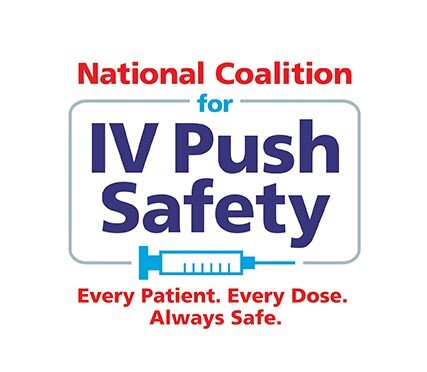The potential for errors and patient harm are even greater today, especially in light of some concerning IV push medication practices that have no supporting evidence and appear to be passed down from nurse to nurse, or taught in undergraduate nursing programs. Several contributing factors have led to unnecessary and unsafe dilution of IVP medications, especially those that are dispensed in ready to administer syringes or cartridges, creating the potential for contamination, mis-labeled or unlabeled syringes, and the unsafe rates of administration.
Since 2007, several agencies and associations have provided recommendations for safe IVP medication use. The Institute of Safe Medication Practices (ISMP) has done extensive work in the past decade investigating current IV push medication use practices. Most notably in 2014 & 2018, surveys revealed that nurses and other practitioners are frequently using unsafe practices, such as dilution.
In 2014, the ISMP convened a group of key stakeholders (range of frontline providers, professional organization, vendors, and regulatory agencies) at the Adult IV Push Medication Summit. The objective was to gain consensus on the greatest risks for IV push medication administration. It was out of the work of this summit that the ISMP Safe Practice Guidelines for Adult IV Push Medications were published in 2016. Today, in 2020, why aren’t these guidelines utilized as the standard for education in our undergraduate nursing programs?
In 2019 a group in Arizona surveyed clinical faculty at community colleges and universities in Arizona. The good news is that 98% teach IVP medication preparation and administration in prelicensure skills lab environments. The bad news is that 50% of clinical nurse educators are teaching further dilution of IVP medications by adding the medication to a prefilled saline flush syringe. The FDA has approved the majority of prefilled saline flush syringes as devices to maintain patency – not for dilution or reconstitution of medications. This is considered “off label” use. We do not believe this is unique to Arizona.
Many nursing programs rely on drug references, either in print or online, to guide the education of our future nurses. A review of these references demonstrates there is variability in the recommendations from one resource to another. Many of these resources are outdated, provide conflicting guidance, and contribute greatly to the variability of what is being taught and what is being practiced.
Nursing education is the foundation of nursing practice and we challenge all those involved in nursing education to commit to teaching our future nurses safe practice guidelines for the administration of IVP medications and to eliminate out dated drug reference guides in their teaching environments. It is time to empower our future nurses to stop the unsafe and unnecessary dilution of IVP medications and advocate for the proper instructions and diluent for the few drugs that must be reconstituted or diluted just prior to administration.

